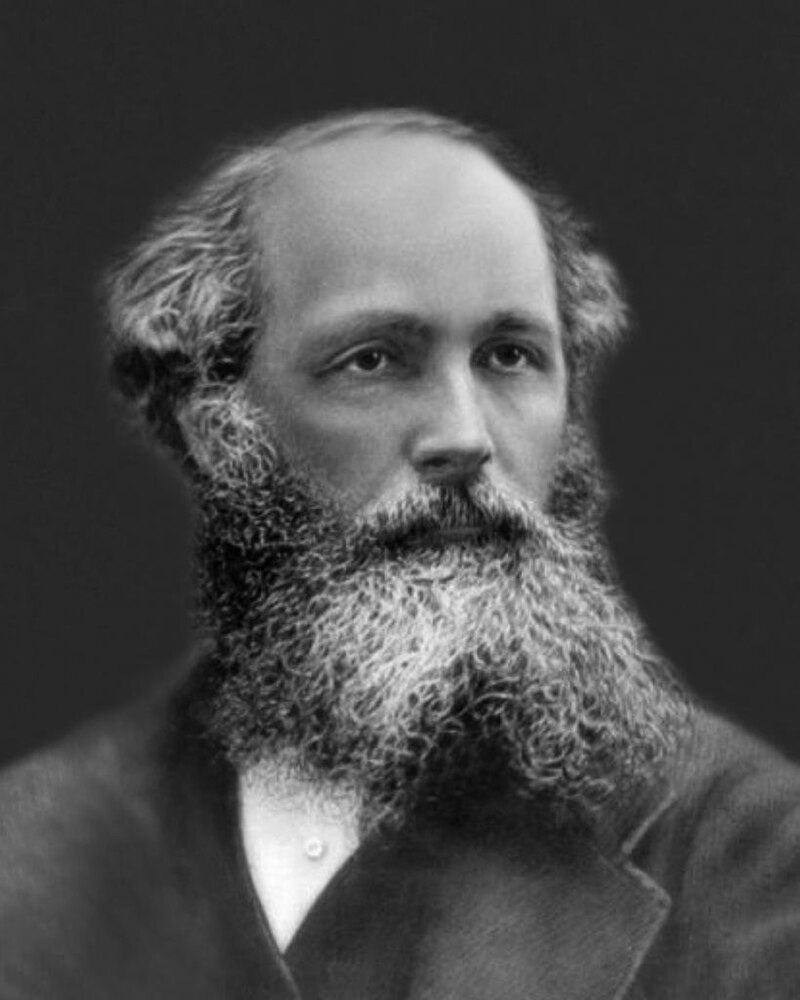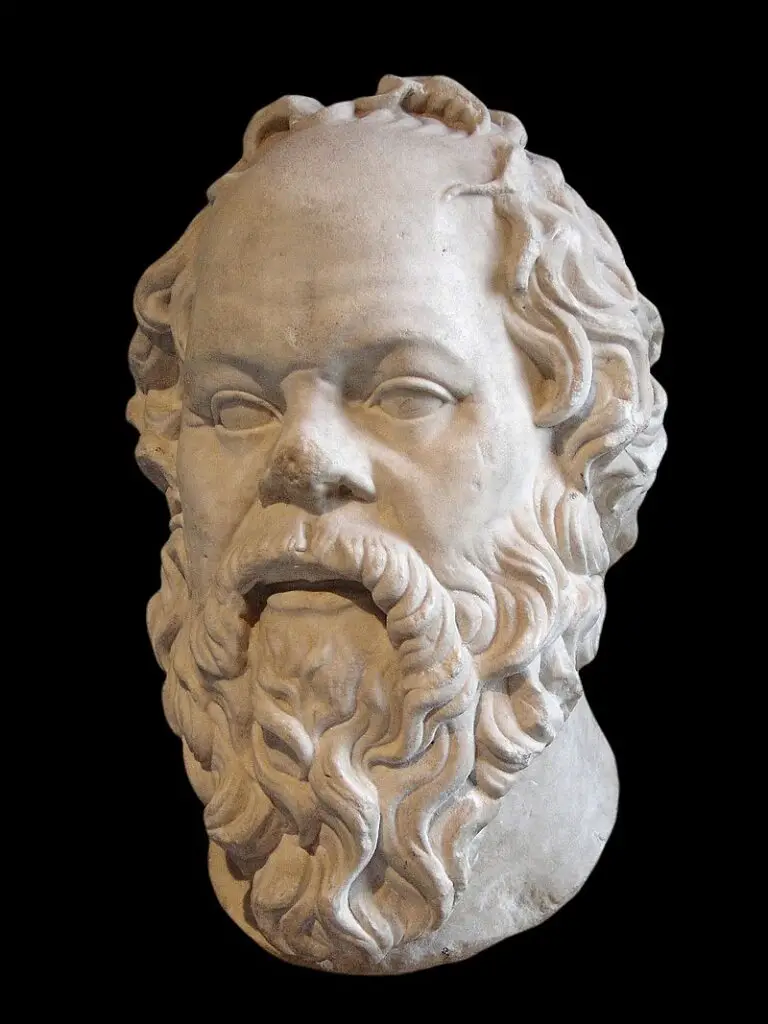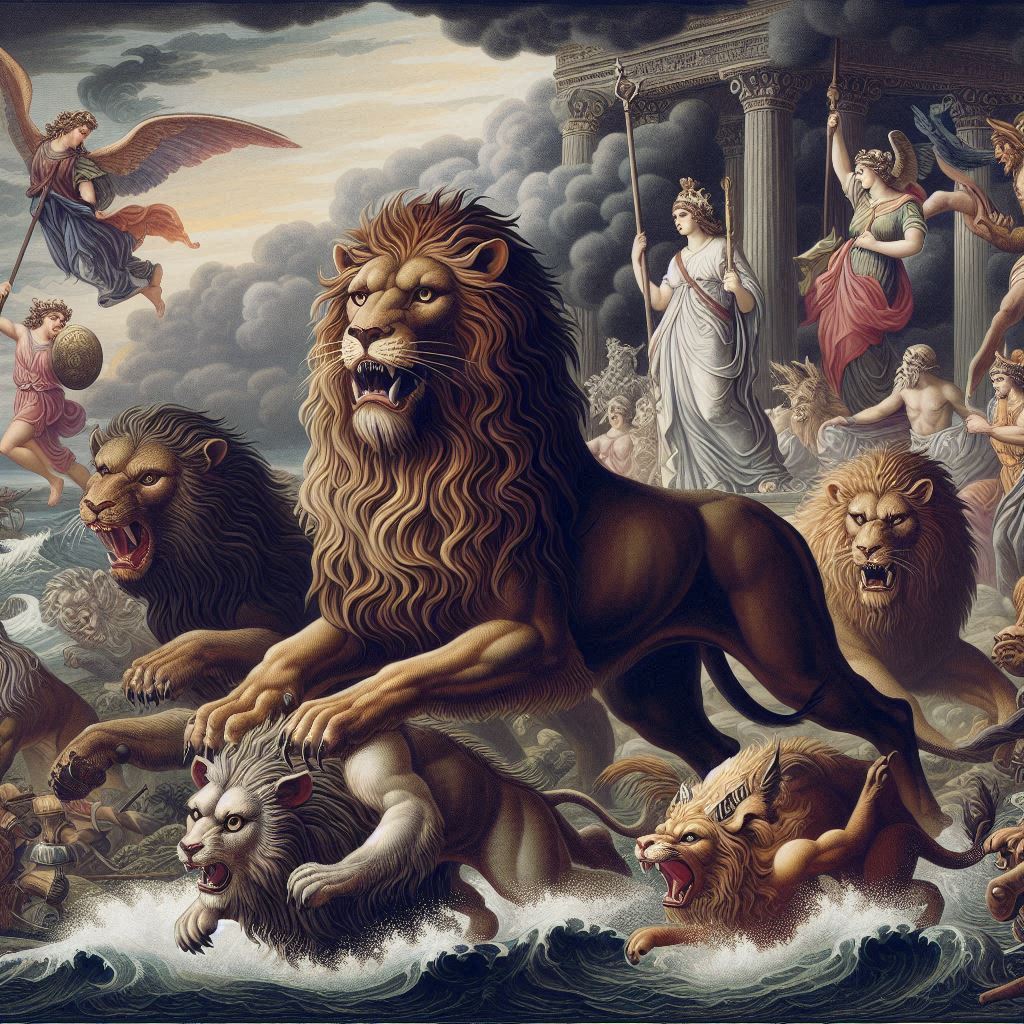James Clerk Maxwell (1831-1879) was a Scottish physicist and mathematician renowned for his groundbreaking contributions to the field of electromagnetism. He formulated a set of equations, known as Maxwell’s equations, which describe the fundamental principles governing electric and magnetic fields. Maxwell’s work played a pivotal role in the development of technologies such as radio and paved the way for later advancements in physics. His achievements had a profound impact on our understanding of the nature of light and electromagnetic waves.
Early Life and Education
James Clerk Maxwell’s early life and education were marked by intellectual curiosity and a prodigious aptitude for learning. Born on June 13, 1831, in Edinburgh, Scotland, he was the only child of John Clerk Maxwell of Middlebie, an advocate and country gentleman, and Frances Cay, his mother. The young Maxwell displayed an early interest in the natural world, often spending his childhood exploring the countryside around his family’s estate.
Maxwell’s education commenced at the Edinburgh Academy, where he demonstrated exceptional abilities in mathematics. His keen intellect and curiosity set him apart from his peers, earning him recognition as a child prodigy. By the age of 16, he had already contributed to the field of mathematics, presenting a paper on oval curves to the Royal Society of Edinburgh.
In 1847, at the age of 16, Maxwell entered the University of Edinburgh. His academic prowess continued to flourish, and he studied a wide range of subjects, including Latin, Greek, philosophy, and natural philosophy (the term used for physics at that time). Despite his early focus on mathematics, Maxwell’s interests expanded to encompass the broader realm of natural philosophy, setting the stage for his future contributions to theoretical physics.
In 1850, at the age of 19, Maxwell transitioned to the University of Cambridge, specifically to Peterhouse College. Cambridge was a hub of scientific activity during this period, with prominent figures such as Isaac Newton and Charles Babbage having left an indelible mark on the institution. At Cambridge, Maxwell delved deeper into mathematical studies, engaging with the works of influential mathematicians of the time.
Under the guidance of William Hopkins, Maxwell pursued a rigorous education in mathematics and physics. His mathematical abilities were widely recognized, and he soon became known for his originality and depth of thought. Maxwell’s early contributions included a paper on the stability of Saturn’s rings, showcasing his interdisciplinary approach by combining mathematics with celestial mechanics.
In 1854, Maxwell graduated with honors as Second Wrangler in the Mathematical Tripos, an impressive accomplishment considering the academic competition at Cambridge. His achievements were not limited to mathematics, as he also explored the emerging field of color theory. Maxwell’s groundbreaking paper, “On the Theory of Compound Colors,” presented a color wheel demonstrating how colors could be combined through the mixing of primary colors, foreshadowing later developments in color photography.
After completing his undergraduate studies, Maxwell continued his academic journey at Cambridge. In 1855, he was elected to a fellowship at Trinity College, which provided him with the financial stability to pursue his scientific interests. During this time, Maxwell began to develop his ideas on electromagnetism, laying the groundwork for his later groundbreaking contributions.
Maxwell’s intellectual pursuits were not confined to the academic realm. He possessed a deep curiosity about the natural world and conducted experiments to investigate various phenomena. Maxwell’s interest in optics led him to examine the properties of polarized light, making significant contributions to the understanding of light and color.
In 1857, Maxwell published a paper titled “On the Equilibrium of Elastic Solids,” showcasing his versatility by exploring topics beyond electromagnetism and optics. This work demonstrated his ability to apply mathematical rigor to diverse scientific inquiries.
Maxwell’s engagement with the scientific community expanded as he became a member of the Cambridge Apostles, an intellectual society that included influential thinkers such as Alfred Lord Tennyson and T.H. Green. These interactions further enriched his intellectual perspective and provided a platform for the exchange of ideas.
Throughout his early career, Maxwell’s passion for scientific exploration was complemented by his engaging and sociable personality. His ability to communicate complex concepts with clarity and enthusiasm endeared him to both colleagues and students. Maxwell’s influence extended beyond his written work; he was known for fostering a collaborative and stimulating intellectual environment.
In 1858, Maxwell married Katherine Mary Dewar, and the couple had two children. Despite his family responsibilities, Maxwell remained dedicated to his scientific pursuits. The couple’s home became a hub of intellectual activity, hosting gatherings that brought together leading scientists, philosophers, and artists of the time.
Maxwell’s early life and education laid the foundation for his extraordinary career in theoretical physics. His journey from a curious child in Edinburgh to a renowned scientist at Cambridge exemplifies the transformative power of intellectual curiosity, rigorous education, and a relentless pursuit of knowledge. Maxwell’s early experiences and academic achievements set the stage for the revolutionary contributions he would make to the fields of electromagnetism, statistical mechanics, and the broader landscape of theoretical physics.
Academic Career
James Clerk Maxwell’s academic career was characterized by a relentless pursuit of knowledge, groundbreaking contributions to theoretical physics, and a profound impact on the scientific community. After completing his formal education at the University of Cambridge, Maxwell embarked on a journey that would establish him as one of the most influential physicists in history.
Upon securing a fellowship at Trinity College, Cambridge, in 1855, Maxwell continued to delve into various scientific disciplines. His early work focused on topics such as elasticity, molecular vortices, and the kinetic theory of gases. Notably, Maxwell developed a model of molecular vortices to explain the phenomenon of viscosity in gases, contributing to the foundation of statistical mechanics.
In 1860, Maxwell was appointed to the Chair of Natural Philosophy at Marischal College in Aberdeen, a position previously held by Sir David Brewster. Maxwell’s tenure at Aberdeen marked a significant phase in his academic career, providing him with the opportunity to delve deeper into experimental physics and contribute to the practical application of scientific principles.
During his time at Aberdeen, Maxwell continued to explore a diverse range of scientific inquiries. His investigations into color perception and the behavior of gases showcased his interdisciplinary approach. Maxwell’s work on the theory of color, building upon his earlier contributions, laid the groundwork for the understanding of color vision and became influential in the development of color photography.
Maxwell’s commitment to experimental work was evident in his efforts to improve the design of the Wheatstone stereoscope, a device for creating three-dimensional images. His modifications enhanced the stereoscope’s functionality, demonstrating his practical ingenuity in addition to his theoretical prowess.
In 1865, Maxwell’s academic career reached a new milestone when he was appointed to the Chair of Experimental Physics at the University of Cambridge, succeeding his mentor, William Hopkins. This prestigious position at the Cavendish Laboratory marked a return to his alma mater and provided Maxwell with a platform to conduct groundbreaking research.
The Cavendish Laboratory became a focal point for scientific inquiry, attracting some of the brightest minds of the time. Maxwell’s leadership and collaborative approach fostered an environment conducive to exploration and discovery. Under his guidance, the laboratory became a hub of experimental and theoretical physics, laying the foundation for future advancements in the field.
One of Maxwell’s most enduring contributions during his tenure at the Cavendish Laboratory was the formulation of Maxwell’s equations, a set of four differential equations that describe the behavior of electric and magnetic fields. Published in 1864, these equations unified and extended the existing laws of electricity and magnetism, providing a comprehensive framework for understanding the fundamental forces of nature.
Maxwell’s equations not only predicted the existence of electromagnetic waves but also demonstrated that these waves could travel through space at the speed of light. This groundbreaking insight led Maxwell to conclude that light itself is an electromagnetic phenomenon. The unification of electricity, magnetism, and optics within a single theoretical framework was a revolutionary achievement, laying the groundwork for the field of classical electrodynamics.
The impact of Maxwell’s work extended beyond the realm of theoretical physics. His equations provided the theoretical foundation for the development of technologies that have become integral to modern life, including radio, television, and wireless communication. Maxwell’s visionary contributions to electromagnetism not only advanced our understanding of the natural world but also paved the way for practical applications that continue to shape the technological landscape.
In addition to his work on electromagnetism, Maxwell made significant contributions to the understanding of the kinetic theory of gases. In collaboration with Ludwig Boltzmann, Maxwell formulated the Maxwell–Boltzmann distribution, describing the statistical distribution of particle speeds in a gas. This work laid the groundwork for the field of statistical mechanics and provided insights into the behavior of gases at the molecular level.
Maxwell’s academic career was characterized by a remarkable ability to bridge theoretical and experimental pursuits. His contributions to both electromagnetism and statistical mechanics showcased the breadth of his intellectual curiosity and the depth of his mathematical insight. Maxwell’s interdisciplinary approach set a precedent for future physicists, emphasizing the interconnectedness of different branches of science.
Throughout his academic career, Maxwell continued to engage with the scientific community, participating in international conferences and collaborating with leading scientists of the time. His influence extended to his students, many of whom went on to make significant contributions to physics.
Tragically, Maxwell’s illustrious academic career was cut short by his untimely death on November 5, 1879, at the age of 48. Despite the brevity of his life, Maxwell’s legacy endures in the equations that bear his name, the technologies he foresaw, and the transformative impact he had on the trajectory of theoretical physics. James Clerk Maxwell’s academic journey stands as a testament to the power of curiosity, intellectual rigor, and the pursuit of knowledge in advancing our understanding of the natural world.
Scientific Contributions
James Clerk Maxwell’s scientific contributions are among the most profound and influential in the history of physics. His work spanned various branches of theoretical physics, including electromagnetism, statistical mechanics, optics, and color theory. Maxwell’s groundbreaking insights not only transformed our understanding of the fundamental forces of nature but also laid the foundation for numerous technological advancements.
At the core of Maxwell’s scientific legacy are his equations, known as Maxwell’s equations, which he formulated in the mid-19th century. These four differential equations describe the behavior of electric and magnetic fields and form the cornerstone of classical electrodynamics. Maxwell’s synthesis and extension of the laws of electricity and magnetism unified these phenomena into a cohesive framework, demonstrating that they are interconnected aspects of a more fundamental electromagnetic force.
Maxwell’s equations predicted the existence of electromagnetic waves, which are oscillating electric and magnetic fields propagating through space at the speed of light. Maxwell made the groundbreaking realization that light itself is an electromagnetic phenomenon, connecting optics with electromagnetism. This unification of seemingly disparate phenomena marked a pivotal moment in the history of physics, laying the groundwork for the understanding of the electromagnetic spectrum and the development of technologies such as radio, television, and wireless communication.
The significance of Maxwell’s equations extends beyond their theoretical elegance. They provided a framework for predicting and understanding the behavior of electric and magnetic fields, enabling subsequent generations of physicists and engineers to develop practical applications. Maxwell’s equations are integral to the design of antennas, circuitry, and communication systems, forming the basis for modern telecommunications and the wireless technologies that permeate our daily lives.
In addition to his work on electromagnetism, Maxwell made substantial contributions to the field of statistical mechanics. In collaboration with the Austrian physicist Ludwig Boltzmann, Maxwell developed the Maxwell–Boltzmann distribution. This distribution describes the statistical distribution of particle speeds in a gas, providing a theoretical foundation for understanding the properties of gases at the molecular level.
The Maxwell–Boltzmann distribution played a pivotal role in the development of statistical mechanics, a branch of physics that seeks to explain macroscopic properties of matter in terms of the behavior of individual particles. Maxwell’s contributions to statistical mechanics were instrumental in establishing the connection between the microscopic world of atoms and molecules and the macroscopic properties of gases, laying the groundwork for later advancements in the field.
Maxwell’s insights into statistical mechanics also led to the formulation of the concept of Maxwell’s demon, a thought experiment that explores the relationship between thermodynamics and information theory. The demon, a hypothetical entity capable of sorting fast and slow-moving gas particles, raised questions about the connections between entropy, information, and the second law of thermodynamics. While Maxwell’s demon was initially a speculative concept, it has since become a topic of deep interest and debate in the field of theoretical physics.
In the realm of optics, Maxwell made significant contributions to the understanding of color and light. Building on the work of Thomas Young and Hermann von Helmholtz, Maxwell developed a color wheel that demonstrated how colors could be produced through the combination of three primary colors—red, green, and blue. This trichromatic color theory laid the foundation for color reproduction in photography and later in television and computer screens.
Maxwell’s work on color perception and the trichromatic theory influenced subsequent developments in color photography. The idea that colors could be reproduced by mixing different intensities of three primary colors became a fundamental principle in the field. Maxwell’s contributions to color theory not only advanced the understanding of human vision but also had practical applications in the emerging technologies of his time.
Beyond his specific contributions to electromagnetism, statistical mechanics, and optics, Maxwell’s approach to science exemplified a deep appreciation for the unity of scientific knowledge. He recognized the interconnectedness of different branches of physics and sought to understand the underlying principles that govern the natural world. Maxwell’s ability to integrate diverse concepts and fields of study set him apart as a visionary thinker.
Maxwell’s influence extended beyond his scientific publications. His ability to communicate complex ideas with clarity and insight, coupled with his engaging and sociable personality, made him a respected figure in the scientific community. Maxwell’s collaborative approach at the Cavendish Laboratory and his interactions with fellow scientists, including his contributions to the Cambridge Apostles, enriched the intellectual landscape of his time.
Tragically, Maxwell’s life was cut short by his death at the age of 48 in 1879. Despite the brevity of his career, his impact on physics was profound. Maxwell’s equations, his contributions to statistical mechanics, and his insights into color theory left an indelible mark on the scientific community. His work influenced subsequent generations of physicists, including Albert Einstein, who later built upon Maxwell’s ideas in the development of the theory of relativity.
In recognition of his contributions, Maxwell’s name is immortalized in various ways, from the units of measurement for magnetic flux (the Maxwell) to the Maxwell–Boltzmann distribution and the color-related concepts that bear his name. Maxwell’s scientific legacy continues to inspire researchers and innovators, emphasizing the enduring power of rigorous inquiry, interdisciplinary thinking, and the pursuit of fundamental understanding in advancing the frontiers of science. James Clerk Maxwell’s work remains a beacon that illuminates the path for those exploring the mysteries of the natural world.
Color Theory and Photography
James Clerk Maxwell’s contributions to color theory had a profound impact on the field of photography, laying the foundation for color reproduction in this visual medium. Maxwell’s work in color theory, building upon the ideas of earlier scientists like Thomas Young and Hermann von Helmholtz, significantly influenced the way we understand and reproduce colors in both print and electronic media.
Maxwell’s trichromatic theory, developed in the mid-19th century, posited that the human eye perceives color through the combination of three primary colors: red, green, and blue. He demonstrated this concept by creating a color wheel that illustrated how different colors could be produced by mixing various intensities of these three primary colors. Maxwell’s trichromatic theory formed the basis for understanding color vision and became foundational for subsequent developments in color reproduction.
The impact of Maxwell’s color theory on photography is particularly evident in the realm of color reproduction. Before Maxwell’s time, early photography was predominantly monochromatic, capturing scenes in shades of black, white, and gray. However, Maxwell’s insights opened the door to the possibility of reproducing a wider spectrum of colors in photographs.
One of the pioneering applications of Maxwell’s trichromatic theory in photography was demonstrated by the physicist and inventor Gabriel Lippmann in the late 19th century. Lippmann’s method involved capturing color information through interference patterns in a layer of microscopic grains on a photographic plate. This approach, known as the Lippmann process, allowed for the creation of color photographs without the use of dyes or pigments.
Maxwell’s trichromatic theory also influenced the work of other scientists and inventors who sought practical methods for color photography. In the early 20th century, photographers experimented with various techniques, including the autochrome plate—a color photography process that utilized a mosaic of microscopic grains of starch dyed in the three primary colors.
As technology advanced, so did the methods for color reproduction in photography. Maxwell’s principles guided the development of subtractive color models, where colors are created by selectively subtracting wavelengths of light. The widely adopted CMY color model (cyan, magenta, yellow), used in color printing and later in color photography, is a direct descendant of Maxwell’s trichromatic theory.
The transition from black-and-white to color photography became more widespread and accessible in the mid-20th century. Innovations like Kodachrome film, introduced by Eastman Kodak in the 1930s, allowed photographers to capture and reproduce vibrant colors. Kodachrome was based on the subtractive color model, employing layers of color-sensitive dyes that, when combined, produced a full spectrum of colors.
Maxwell’s influence on color reproduction extended to the development of color television. The RGB color model, derived from Maxwell’s trichromatic theory, became the standard for electronic displays. In this model, colors are produced by combining red, green, and blue light in varying intensities. Today, this RGB model is the basis for the screens of computers, smartphones, and television monitors.
In the digital age, Maxwell’s trichromatic theory continues to play a central role in color reproduction. Digital cameras and displays rely on the RGB color model, where each pixel is composed of red, green, and blue subpixels. Image processing software utilizes algorithms inspired by Maxwell’s ideas to manipulate and reproduce colors with precision.
Maxwell’s impact on photography extends beyond the technical aspects of color reproduction. His work influenced the artistic and creative possibilities available to photographers. The ability to convey a broader spectrum of colors allowed photographers to capture the richness and subtlety of the visual world in ways that were not possible with monochromatic images.
Statistical Mechanics and Thermodynamics
James Clerk Maxwell’s contributions to statistical mechanics significantly advanced our understanding of the microscopic behavior of gases and laid the groundwork for bridging the gap between the macroscopic laws of thermodynamics and the underlying dynamics of individual particles. His collaborative efforts with Ludwig Boltzmann led to the formulation of the Maxwell–Boltzmann distribution, a key concept in statistical mechanics.
In the 19th century, the field of thermodynamics had successfully established macroscopic laws governing the behavior of heat and energy in systems, yet a microscopic understanding of the underlying particles remained elusive. Maxwell recognized the need to connect the macroscopic observations of thermodynamics with the microscopic world of individual molecules. This challenge prompted him to delve into the emerging field of statistical mechanics.
Maxwell’s collaboration with Ludwig Boltzmann, an Austrian physicist, proved to be a fruitful partnership in the development of statistical mechanics. Together, they worked on explaining the properties of gases based on the statistical distribution of molecular speeds. In 1859, Maxwell published a paper presenting a simplified version of the distribution of molecular speeds, laying the foundation for future developments in statistical mechanics.
The culmination of their joint efforts resulted in the formulation of the Maxwell–Boltzmann distribution, first published by Boltzmann in 1866. This distribution describes the statistical distribution of speeds for a collection of gas molecules at a particular temperature. It illustrates the probability of finding molecules with different speeds in a gas and provides a key link between the microscopic behavior of particles and the macroscopic properties described by thermodynamics.
The Maxwell–Boltzmann distribution became an essential component of statistical mechanics, offering insights into the concept of temperature at the molecular level. The distribution demonstrates that the temperature of a gas is related to the average kinetic energy of its molecules. As the temperature increases, the distribution shifts towards higher speeds, reflecting the increased kinetic energy of the molecules.
One of the significant achievements of the Maxwell–Boltzmann distribution was its ability to explain the phenomenon of heat conduction. The distribution provided a statistical foundation for understanding how heat energy is transferred between particles in a gas. It demonstrated that the faster-moving particles, with higher kinetic energy, are more likely to collide and transfer energy to slower-moving particles, leading to a net flow of heat.
Maxwell’s contributions to statistical mechanics also extended to the development of the kinetic theory of gases. In 1860, he presented a paper in which he introduced the concept of molecular vortices to explain the viscosity of gases. While this particular model was later superseded by other explanations, Maxwell’s engagement with the kinetic theory laid the groundwork for understanding the behavior of gases at the molecular level.
Furthermore, Maxwell’s work on statistical mechanics played a crucial role in addressing questions related to the second law of thermodynamics. The concept of entropy, a measure of the disorder or randomness in a system, became central to these discussions. Maxwell’s statistical approach provided a statistical interpretation of entropy, linking it to the probability of different molecular configurations.
The statistical mechanics developed by Maxwell and Boltzmann significantly influenced the scientific community’s understanding of thermodynamics. While the macroscopic laws of thermodynamics provided a framework for understanding energy transfer and transformation, statistical mechanics offered a microscopic foundation for these laws, providing a more comprehensive and unified perspective.
Despite the groundbreaking nature of their work, Maxwell and Boltzmann faced resistance and skepticism from some quarters of the scientific community. The statistical approach was met with skepticism, as it introduced probabilistic concepts that departed from the determinism prevalent in classical physics. However, with the passage of time and the validation of their ideas through experiments and simulations, statistical mechanics gained widespread acceptance.
Maxwell’s insights into statistical mechanics and thermodynamics had a profound and lasting impact on the field of physics. His work paved the way for subsequent developments in statistical and quantum mechanics, as well as our modern understanding of the behavior of matter at the microscopic level. Maxwell’s contributions to these foundational aspects of physics continue to shape our understanding of the natural world and play a crucial role in contemporary research across various scientific disciplines.
Personal Life
James Clerk Maxwell’s personal life, though relatively short, was marked by intellectual pursuits, a warm and engaging personality, and meaningful relationships. Born on June 13, 1831, in Edinburgh, Scotland, Maxwell was the only child of John Clerk Maxwell of Middlebie and Frances Cay. His upbringing, family environment, and early education played pivotal roles in shaping the character and interests of the young prodigy.
Maxwell’s childhood was spent on his family’s estate, Glenlair, where he developed a deep connection with the natural world. His curiosity about the environment around him, coupled with an early affinity for mathematics, hinted at the brilliance that would later define his scientific career. The supportive atmosphere at home, with parents who encouraged his intellectual pursuits, fostered the growth of Maxwell’s innate curiosity and talents.
Educated at the Edinburgh Academy, Maxwell demonstrated exceptional abilities in mathematics, and by the age of 16, he had already contributed to the Royal Society of Edinburgh with a paper on oval curves. This early success foreshadowed the remarkable scientific career that lay ahead.
Maxwell’s formal education continued at the University of Edinburgh, where he studied natural philosophy and further honed his mathematical skills. His intellectual curiosity extended beyond the boundaries of a single discipline, reflecting a broader interest in understanding the fundamental principles of the natural world.
In 1850, Maxwell ventured to the University of Cambridge, specifically to Peterhouse College. Cambridge, a renowned center of scientific activity, provided Maxwell with an intellectually stimulating environment. Under the guidance of William Hopkins, Maxwell continued his studies in mathematics and physics, achieving distinction as Second Wrangler in the Mathematical Tripos upon graduation in 1854.
Maxwell’s academic success led to his election as a fellow at Trinity College, Cambridge, providing financial stability that allowed him to pursue his scientific interests. This period of his life also witnessed the beginning of Maxwell’s contributions to the broader scientific community. His early work on color theory and the stability of Saturn’s rings showcased the diverse range of his scientific interests and his ability to connect different fields of study.
In 1858, Maxwell married Katherine Mary Dewar, known as Katherine, and the couple went on to have two children. Maxwell’s family life, centered at Glenlair, became a harmonious balance between his scientific endeavors and domestic responsibilities. The couple’s home was a welcoming space for intellectual discussions and gatherings that brought together scientists, philosophers, and artists.
Despite his dedication to scientific pursuits, Maxwell’s personal life was characterized by warmth and sociability. He was known for his engaging personality, a trait that endeared him to colleagues and students alike. Maxwell’s ability to communicate complex scientific concepts with clarity and enthusiasm made him not only a respected scientist but also a beloved figure in the scientific community.
Maxwell’s collaborative spirit was evident in his interactions with fellow scientists. As the head of the Cavendish Laboratory at the University of Cambridge, he fostered an environment of collaboration and shared exploration. Maxwell’s leadership contributed to the laboratory’s reputation as a hub of scientific inquiry, attracting some of the brightest minds of the time.
Maxwell’s engagement with the broader intellectual community extended to his involvement with the Cambridge Apostles, an intellectual society that included influential thinkers such as Alfred Lord Tennyson and T.H. Green. This forum for intellectual exchange further enriched Maxwell’s perspectives and allowed him to explore ideas beyond the confines of the laboratory.
Tragically, Maxwell’s personal life was marred by illness. In the early 1870s, he faced the challenges of recurring health issues, specifically abdominal cancer. Despite the physical toll of his illness, Maxwell continued his scientific work with determination and resilience. His unwavering commitment to his intellectual pursuits in the face of declining health reflects the depth of his passion for science.
James Clerk Maxwell passed away on November 5, 1879, at the age of 48, leaving behind a legacy that transcends the boundaries of his personal life. Maxwell’s contributions to theoretical physics and his ability to connect disparate fields of study have left an indelible mark on the scientific landscape. His warm and engaging personality, along with his dedication to family and colleagues, adds a human dimension to the genius that reshaped our understanding of electromagnetism, statistical mechanics, and color theory.
In remembering Maxwell, we not only celebrate his scientific achievements but also acknowledge the vibrant and multifaceted life he led. His legacy endures not only in the equations that bear his name but also in the impact he had on the scientific community and the lives he touched through his intellect, warmth, and collaborative spirit. James Clerk Maxwell’s personal and professional journey remains an inspiring testament to the pursuit of knowledge and the enduring influence of a brilliant mind on the world.
Legacy and Impact
James Clerk Maxwell’s legacy is monumental, encompassing profound contributions to theoretical physics, groundbreaking advancements in electromagnetism and statistical mechanics, and a lasting impact on the scientific community. His work laid the foundation for key technological innovations, and his ideas continue to shape the landscape of physics, influencing researchers and engineers across diverse fields.
At the core of Maxwell’s legacy are his equations, known as Maxwell’s equations, formulated in the mid-19th century. These four differential equations revolutionized the understanding of electricity and magnetism, unifying these phenomena into a comprehensive framework. Maxwell’s synthesis and extension of existing laws paved the way for the prediction and understanding of electromagnetic waves, establishing a profound connection between optics and electromagnetism.
The practical implications of Maxwell’s equations were transformative. They provided the theoretical groundwork for the development of technologies that have become indispensable in modern life. The prediction of electromagnetic waves traveling at the speed of light not only led to the understanding of light itself as an electromagnetic phenomenon but also laid the foundation for the development of wireless communication, radio, television, and other forms of long-distance communication.
The impact of Maxwell’s electromagnetic theory extended beyond the theoretical realm. His work influenced subsequent generations of physicists, including luminaries such as Albert Einstein and Richard Feynman. Einstein’s theory of relativity and the development of quantum mechanics owe a debt to Maxwell’s pioneering work, showcasing the enduring influence of his ideas on the trajectory of theoretical physics.
Maxwell’s contributions to statistical mechanics were equally groundbreaking. His collaboration with Ludwig Boltzmann led to the formulation of the Maxwell–Boltzmann distribution, a concept that provided a statistical foundation for understanding the behavior of gases at the molecular level. This distribution remains a cornerstone in statistical mechanics, guiding our understanding of temperature, pressure, and the distribution of molecular speeds in gases.
The Maxwell–Boltzmann distribution played a pivotal role in the development of statistical mechanics, offering insights into the microscopic behavior of particles and establishing connections between statistical concepts and thermodynamics. Maxwell’s work in this domain contributed to the development of the kinetic theory of gases, enriching our understanding of the fundamental properties of matter.
Maxwell’s contributions to color theory were equally influential, impacting not only the scientific understanding of light and color but also the fields of art and technology. His trichromatic theory laid the groundwork for color reproduction in photography and printing, enabling the faithful representation of a wide spectrum of colors. The RGB color model, derived from Maxwell’s trichromatic theory, is a fundamental component of electronic displays, shaping the way we interact with technology in our daily lives.
Beyond his scientific achievements, Maxwell’s legacy is enriched by his intellectual generosity and collaborative spirit. As the head of the Cavendish Laboratory at the University of Cambridge, he fostered an environment conducive to scientific inquiry and collaboration. The laboratory became a hub of intellectual activity, attracting some of the brightest minds of the time.
Maxwell’s legacy is immortalized in the units of measurement for magnetic flux (the Maxwell) and the distribution of molecular speeds in a gas (the Maxwell–Boltzmann distribution). His name is synonymous with the equations that transformed our understanding of electromagnetism and the principles that govern the behavior of matter at the microscopic level.
The impact of Maxwell’s ideas extends far beyond the scientific community. His ability to communicate complex concepts with clarity and insight has left an indelible mark on the way science is presented and understood. Maxwell’s famous quote, “The 2nd law of thermodynamics has the same degree of truth as the statement that if you throw a tumblerful of water into the sea, you cannot get the same tumblerful of water out again,” reflects his gift for conveying profound scientific truths in accessible terms.
Maxwell’s legacy continues to resonate in the classrooms and laboratories where students learn the principles of electromagnetism and statistical mechanics. His work remains an integral part of the curriculum in physics and engineering programs worldwide, ensuring that future generations of scientists and engineers are inspired by his groundbreaking contributions.
Recognition and Honors
James Clerk Maxwell’s groundbreaking contributions to theoretical physics earned him widespread recognition and numerous honors during and after his lifetime. His work in the fields of electromagnetism, statistical mechanics, and color theory laid the foundation for modern physics and technologies. Maxwell’s impact on science was acknowledged by fellow scientists, institutions, and societies, establishing him as one of the most influential physicists in history.
Maxwell’s early achievements, including his formulation of Maxwell’s equations, quickly garnered attention and admiration from the scientific community. His unification of electricity and magnetism into a comprehensive electromagnetic theory was a monumental breakthrough that transformed the understanding of these fundamental forces. The Royal Society of London recognized Maxwell’s work by awarding him the Royal Medal in 1860, a prestigious honor that underscored the significance of his contributions to science.
In 1861, Maxwell received another significant recognition when he was elected a fellow of the Royal Society. This election marked a formal acknowledgment of his status as a leading scientist and granted him membership in one of the most esteemed scientific societies in the world. Maxwell’s association with the Royal Society further solidified his position in the scientific community and provided a platform for the dissemination of his future research.
Maxwell’s contributions to color theory also received recognition. His trichromatic theory, which explained how colors could be produced through the combination of three primary colors, was a pioneering idea that influenced both scientific and artistic communities. Maxwell’s work in this area earned him the Keith Prize from the Royal Society of Edinburgh in 1856, highlighting the interdisciplinary nature of his contributions.
In 1871, Maxwell was appointed as the first Cavendish Professor of Physics at the University of Cambridge. This prestigious position not only reflected Maxwell’s standing in the scientific community but also provided him with a platform to shape the future of physics education and research. The establishment of the Cavendish Laboratory, with Maxwell at its helm, marked a new era in experimental physics and became a center for scientific excellence.
As the head of the Cavendish Laboratory, Maxwell continued to receive recognition for his leadership and contributions to science. His ability to foster a collaborative and intellectually stimulating environment drew talented researchers to the laboratory, further enhancing its reputation. The laboratory became a hub for groundbreaking experiments and theoretical work, solidifying Maxwell’s legacy as a leader in experimental physics.
Maxwell’s impact on science extended beyond national borders. His work influenced scientists worldwide, and he gained international recognition for his contributions. In 1875, Maxwell was elected as a foreign member of the Royal Netherlands Academy of Arts and Sciences, a testament to the global recognition of his scientific achievements.
Posthumously, Maxwell’s legacy continued to be honored and celebrated. His equations, which form the cornerstone of classical electrodynamics, were widely acknowledged for their transformative impact. In 1881, two years after Maxwell’s death, the Royal Society established the prestigious Adams Prize in his honor. The Adams Prize, awarded for mathematical and physical sciences, became a symbol of recognition for exceptional contributions to these fields.
Maxwell’s influence also reached the realm of applied science and engineering. The practical applications of his electromagnetic theory, such as wireless communication and radio, revolutionized technology in the 20th century. The impact of these technologies on society led to a broader appreciation of Maxwell’s contributions beyond the scientific community.
In the 20th century, the centenary of Maxwell’s birth in 1931 was marked by numerous celebrations and commemorations. His life and achievements were honored through conferences, publications, and events that highlighted the enduring significance of his work. The international scientific community recognized Maxwell’s bicentennial in 2031, once again reflecting on the enduring impact of his contributions to physics.
Maxwell’s name became synonymous with the units of measurement for magnetic flux, with one unit named the Maxwell in his honor. The recognition of Maxwell’s equations as a cornerstone of physics and technology led to the naming of various concepts and principles after him, emphasizing their central role in the understanding of electromagnetism.
The Maxwell Medal, established by the Institute of Physics in the United Kingdom, is awarded annually to individuals for outstanding contributions to theoretical physics. This medal serves as a contemporary recognition of excellence in a manner that aligns with the enduring legacy of James Clerk Maxwell.
Maxwell’s legacy also transcends the scientific community and extends into popular culture. His equations and concepts have found their way into literature, art, and various forms of media, showcasing the broader cultural impact of his ideas. Maxwell’s name is invoked not only in scientific discussions but also in discussions about the intersection of science and culture.










